China Brands, Marketing & Consumers
Top 5 Chinese Online Consumer Trends After Single’s Day Sales
The world’s biggest online sale of the year, China’s Single’s Day, took place on November 11. What’s on Weibo gives an overview of the latest trends and biggest brands, showing how China’s middle-class online consumer habits are undergoing drastic changes.
Published
8 years agoon
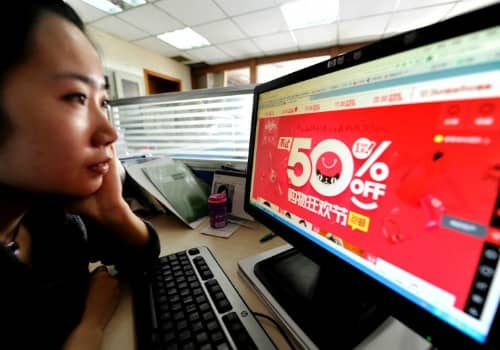
WHAT’S ON WEIBO ARCHIVE | PREMIUM CONTENT ARTICLE
The world’s biggest online sale of the year, China’s Single’s Day, took place on November 11. Some Chinese consumer trends have become especially visible after the big sales. What’s on Weibo gives an overview of the latest trends and biggest brands, showing how China’s middle-class online consumer habits are undergoing drastic changes. [Premium Content by What’s on Weibo].
China’s 11/11 Single’s Day, the world’s biggest online shopping event of the year, has once again exceeded the sale figures of previous years.
The 8th edition of China’s Online Single’s Day Shopping Festival, that was initiated by e-commerce giant Alibaba in 2009, broke all previous sales records with a 24-hour sales volume of $17.6 billion (120.7 billion RMB) on Alibaba’s Tmall (天猫) on November 11. Online shopping mall JD.com also had 60% more sales than the previous year.
With so much success, many e-commerce platforms have extended the shopping festival until November 18. Time to see which Chinese online consumer trends are especially apparent during this year’s Single Day’s sales.
[blendlebutton]
1. Smartphone & Tablets: Made-in-China Wins
Together with fashion and health and beauty products, electronics are among the top-selling products of China’s biggest annual online sale. This year’s Single’s Day has shown that the iPhone7 is still very popular among Chinese consumers, despite the subdued reactions in China to its release in September.
The Gome e-commerce chain (国美在线) revealed that the iPhone7, which was priced at 4888 RMB (±719 US$), was the store’s number one best-seller of November 11. Gome sold 22000 devices within 24 hours.
Despite the surge in iPhone sales, made-in-China smartphones were the undeniable winner of the Single’s Day smartphone sales. Overall, netizens bought more Chinese smartphone brands than international ones. According to the Single’s Day sales numbers of JD.com, no less than 8 of the top 10 best-selling smartphones were domestically produced mobile phones. China’s Huawei and Xiaomi brands did especially well on Alibaba’s Tmall.
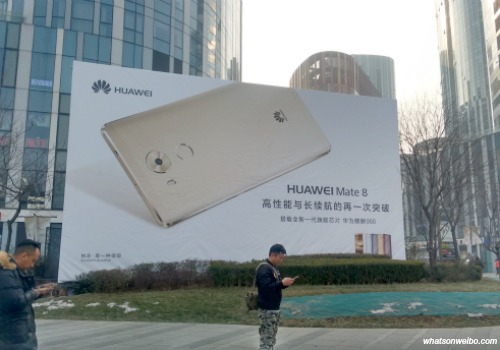
The surge in sales of Chinese smartphones is also promising for the international market: Huawei aims to become the world’s second-largest maker of smartphones within two years.
The growth of Chinese brand popularity is not just noticeable on the smartphone market – Chinese brands are also winning over tablet buyers. Apple is no longer the only big player on the Chinese tablet market, with brands such as Lenovo and Huawei seeing considerable growth in tablet sales.
2. Good for the Baby
Of the non-electronic products, it is especially baby products that did well on China’s Single’s Day. Anything from milk powder to baby wipes or diapers were popular during the 11/11 sales. Vastly different from the electronic market, it is especially foreign brands such as Friso (Friesland Campina, Dutch) and Moony (Japanese) that are most popular among Chinese consumers.
As China’s consumer trust in made-in-China baby brands has been damaged through various safety scandals over previous years, foreign brands are leading the market.
What is remarkable about this year’s sales, as revealed by China’s e-commerce platform Beibei (贝贝网, focused on maternal and infant products) is that the children’s clothing market is more booming than ever. Together with the surge in other baby- and mother-related products, the shift to bigger sales of these non-traditional products shows that China’s ‘Mummy Economy’ (妈妈经济) is becoming more relevant.

According to Beibei, there are over 50 million Chinese mothers registered as e-commerce users on their platform. Their data shows that there are different consumer trends within this group in China.
Mothers from the northeast of China, for example, will buy more baby’s clothes and shoes, as it gets colder in those regions than the more southern parts of China. The mothers in the Yangtze River Delta area (Shanghai, Jiangsu, Zhejiang) are known to buy many baby snacks and foodstuff. In the south of China, nearer to Hong Kong, consumers mainly buy baby necessities such as diapers and baby wipes.
3. Fashion: Individual Style over Traditional Brands
Despite the popularity of electronics and baby products, clothing and lifestyle goods are still the number one best-selling products in China’s online sales. According to sales numbers released by JD.com, 40% of all their 11/11 sales were in the apparel & lifestyle category.
Noteworthy non-Chinese brand names are Lee, TUMI and Guess, which respectively sold 43 times, 20 times, and 70 times more clothes this year than in previous years.
Although traditional international luxury brands such as Burberry and MaxMara remain popular, new sales data shows that Chinese consumers now, for the first time, pursue more non-mainstream brands for their style than the established luxury brands.
A good example is the growing popularity of the Canadian apparel brand Canada Goose, which completely sold out on Chinese fashion e-commerce site Xiu.com (走秀网) on November 11. The brand is known for its warm and stylish outerwear. Another non-mainstream popular brand is the Italian designer clothes & accessories label Mr & Mrs Italy, which was only recently introduced on fashion platform Xiu.com and became hot selling on 11/11.
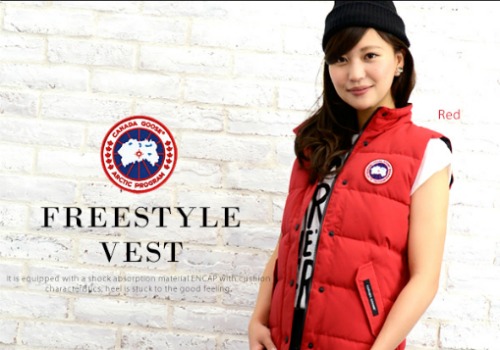
Other upcoming trendy brands such as the Scandinavian Acne Studios and & Other Stories (by the same fashion heads as H&M) were also surprising best-selling names that are all about style.

With Chinese middle-class consumers now gradually attaching more importance to style, originality, and quality of a label than its fame, somewhat more low-key designer brands like Brunello Cucinelli or Loro Piana are starting to replace classic Louis Vuitton or Burberry brands.
According to Xiu.com representatives, these new developments show that China’s middle-class consumer habits are now undergoing dramatic changes. People are no longer pursuing a bag only because it has an LV logo – they want a bag that suits their own style and needs.
4. China’s New Online Consumers: The Rise of Smaller Towns
Although first- and second-tier cities are still the most important consumer markets for online e-commerce platforms, this year’s sales data point out that consumers in third-tier cities and provincial level towns are becoming an important target group.
E-commerce giant JD.com saw a substantial growth in orders from prefectural cities and smaller towns from provinces such as Guizhou, Jiangxi, Hubei, Henan, and Yunnan.
In 2011, “the rise of China’s 2nd and 3rd tier cities” was a hot topic in the media. Five years later, this trend has shifted to China’s rural areas, where the new consumers are located.
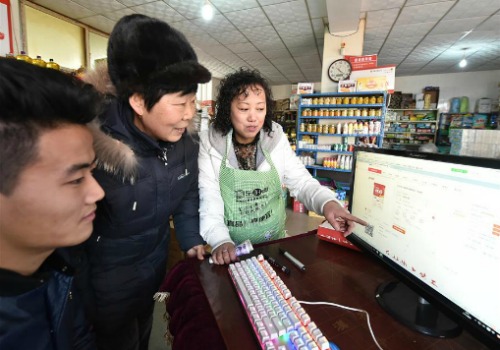
Earlier this year, Bloomberg reported that 77.14 million rural Chinese shopped online in 2015, which was already a 40.6 percent increase from 2014. On average, rural Chinese spend more online than their urban counterparts, and their online spending is growing faster.
According to Economics Daily, drastic increases in sales to consumers from smaller towns and villages shows the improving living standards in these areas. High-end products like refrigerators and air-conditionings are among their top-selling products for this consumer group.
The rise of China’s more third-tier and rural consumers is closely connected to China’s booming and readily available e-commerce, that has made rural consumer demand strong. With China’s online population now exceeding 700 million people, China’s rural netizens are growing steadily – that new tablet or heater is now just a few clicks away.
5. The Power of the Post-1990s Generation
The sales data from this year’s Single’s Day as provided by the Gome (国美) e-commerce platform have pointed out that the majority of orders (which had a staggering growth of 268% compared to last year) were placed by consumers below the age of 40. Of all online customers on Single’s Day, 85% were below the age of 40.
Within this group, 47% of people are of the 16-29 age category and 34% aged between 30-39. Young women are more active online consumers than the men; 67% of all purchases were done by women.

The Gome data shows the power of the post-1990s consumer. People of the generation born after 1990, often referred to as the ‘Post 90s’ or ‘jiulinghou‘ (九零后) are also called “marketers’ dream consumers” for their impulsiveness in buying goods, and their general pursuit of products that improve their happiness; they are the ultimate consumers, much more willing to spend money than the generations before them.
With a new young generation of eager online consumers, the rise of rural e-shoppers and a thriving ‘mummy economy’, China’s e-commerce companies having something to look forward to for their next year’s Single’s Day. The biggest online shopping event in the world is only about to get bigger.
– By Manya Koetse
Follow on Twitter or Like on Facebook
Sources:
Part of this article on based on the 14 November article by Zhao Chenting (赵陈婷) originally published on http://www.yicai.com/..
Other sources are linked to within the article.
©2016 Whatsonweibo. All rights reserved. Do not reproduce our content without permission – you can contact us at info@whatsonweibo.com.
[/blendlebutton]
Manya Koetse is the founder and editor-in-chief of whatsonweibo.com. She is a writer, public speaker, and researcher (Sinologist, MPhil) on social trends, digital developments, and new media in an ever-changing China, with a focus on Chinese society, pop culture, and gender issues. She shares her love for hotpot on hotpotambassador.com. Contact at manya@whatsonweibo.com, or follow on Twitter.

China Books & Literature
Why Chinese Publishers Are Boycotting the 618 Shopping Festival
Bookworms love to get a good deal on books, but when the deals are too good, it can actually harm the publishing industry.
Published
2 months agoon
June 8, 2024By
Ruixin Zhang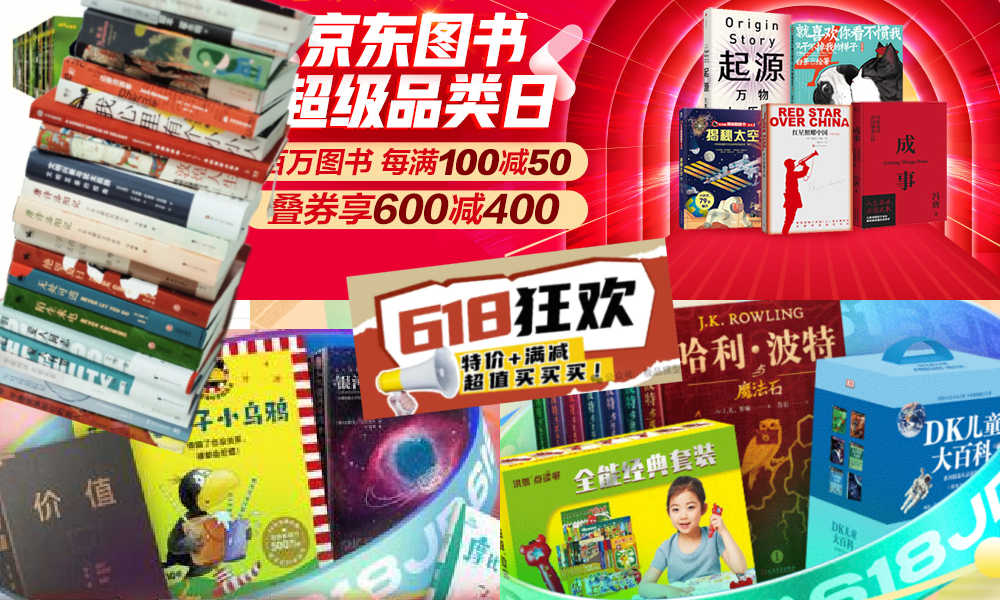
JD.com’s 618 shopping festival is driving down book prices to such an extent that it has prompted a boycott by Chinese publishers, who are concerned about the financial sustainability of their industry.
When June begins, promotional campaigns for China’s 618 Online Shopping Festival suddenly appear everywhere—it’s hard to ignore.
The 618 Festival is a product of China’s booming e-commerce culture. Taking place annually on June 18th, it is China’s largest mid-year shopping carnival. While Alibaba’s “Singles’ Day” shopping festival has been taking place on November 11th since 2009, the 618 Festival was launched by another Chinese e-commerce giant, JD.com (京东), to celebrate the company’s anniversary, boost its sales, and increase its brand value.
By now, other e-commerce platforms such as Taobao and Pinduoduo have joined the 618 Festival, and it has turned into another major nationwide shopping spree event.
For many book lovers in China, 618 has become the perfect opportunity to stock up on books. In previous years, e-commerce platforms like JD.com and Dangdang (当当) would roll out tempting offers during the festival, such as “300 RMB ($41) off for every 500 RMB ($69) spent” or “50 RMB ($7) off for every 100 RMB ($13.8) spent.”
Starting in May, about a month before 618, the largest bookworm community group on the Douban platform, nicknamed “Buying Like Landsliding, Reading Like Silk Spinning” (买书如山倒,看书如抽丝), would start buzzing with activity, discussing book sales, comparing shopping lists, or sharing views about different issues.

Social media users share lists of which books to buy during the 618 shopping festivities.
This year, however, the mood within the group was different. Many members posted that before the 618 season began, books from various publishers were suddenly taken down from e-commerce platforms, disappearing from their online shopping carts. This unusual occurrence sparked discussions among book lovers, with speculations arising about a potential conflict between Chinese publishers and e-commerce platforms.
A joint statement posted in May provided clarity. According to Chinese media outlet The Paper (@澎湃新闻), eight publishers in Beijing and the Shanghai Publishing and Distribution Association, which represent 46 publishing units in Shanghai, issued a statement indicating they refuse to participate in this year’s 618 promotional campaign as proposed by JD.com.
The collective industry boycott has a clear motivation: during JD’s 618 promotional campaign, which offers all books at steep discounts (e.g., 60-70% off) for eight days, publishers lose money on each book sold. Meanwhile, JD.com continues to profit by forcing publishers to sell books at significantly reduced prices (e.g., 80% off). For many publishers, it is simply not sustainable to sell books at 20% of the original price.
One person who has openly spoken out against JD.com’s practices is Shen Haobo (沈浩波), founder and CEO of Chinese book publisher Motie Group (磨铁集团). Shen shared a post on WeChat Moments on May 31st, stating that Motie has completely stopped shipping to JD.com as it opposes the company’s low-price promotions. Shen said it felt like JD.com is “repeatedly rubbing our faces into the ground.”
Nevertheless, many netizens expressed confusion over the situation. Under the hashtag topic “Multiple Publishers Are Boycotting the 618 Book Promotions” (#多家出版社抵制618图书大促#), people complained about the relatively high cost of physical books.
With a single legitimate copy often costing 50-60 RMB ($7-$8.3), and children’s books often costing much more, many Chinese readers can only afford to buy books during big sales. They question the justification for these rising prices, as books used to be much more affordable.
Book blogger TaoLangGe (@陶朗歌) argues that for ordinary readers in China, the removal of discounted books is not good news. As consumers, most people are not concerned with the “life and death of the publishing industry” and naturally prefer cheaper books.
However, industry insiders argue that a “price war” on books may not truly benefit buyers in the end, as it is actually driving up the prices as a forced response to the frequent discount promotions by e-commerce platforms.
China News (@中国新闻网) interviewed publisher San Shi (三石), who noted that people’s expectations of book prices can be easily influenced by promotional activities, leading to a subconscious belief that purchasing books at such low prices is normal. Publishers, therefore, feel compelled to reduce costs and adopt price competition to attract buyers. However, the space for cost reduction in paper and printing is limited.
Eventually, this pressure could affect the quality and layout of books, including their binding, design, and editing. In the long run, if a vicious cycle develops, it would be detrimental to the production and publication of high-quality books, ultimately disappointing book lovers who will struggle to find the books they want, in the format they prefer.
This debate temporarily resolved with JD.com’s compromise. According to The Paper, JD.com has started to abandon its previous strategy of offering extreme discounts across all book categories. Publishers now have a certain degree of autonomy, able to decide the types of books and discount rates for platform promotions.
While most previously delisted books have returned for sale, JD.com’s silence on their official social media channels leaves people worried about the future of China’s publishing industry in an era dominated by e-commerce platforms, especially at a time when online shops and livestreamers keep competing over who has the best book deals, hyping up promotional campaigns like ‘9.9 RMB ($1.4) per book with free shipping’ to ‘1 RMB ($0.15) books.’
This year’s developments surrounding the publishing industry and 618 has led to some discussions that have created more awareness among Chinese consumers about the true price of books. “I was planning to bulk buy books this year,” one commenter wrote: “But then I looked at my bookshelf and saw that some of last year’s books haven’t even been unwrapped yet.”
Another commenter wrote: “Although I’m just an ordinary reader, I still feel very sad about this situation. It’s reasonable to say that lower prices are good for readers, but what I see is an unfavorable outlook for publishers and the book market. If this continues, no one will want to work in this industry, and for readers who do not like e-books and only prefer physical books, this is definitely not a good thing at all!”
By Ruixin Zhang, edited with further input by Manya Koetse
Independently reporting China trends for over a decade. Like what we do? Support us and get the story behind the hashtag by subscribing:
Spotted a mistake or want to add something? Please let us know in comments below or email us. First-time commenters, please be patient – we will have to manually approve your comment before it appears.
©2024 Whatsonweibo. All rights reserved. Do not reproduce our content without permission – you can contact us at info@whatsonweibo.com.
China Brands, Marketing & Consumers
Chinese Sun Protection Fashion: Move over Facekini, Here’s the Peek-a-Boo Polo
From facekini to no-face hoodie: China’s anti-tan fashion continues to evolve.
Published
2 months agoon
June 6, 2024
It has been ten years since the Chinese “facekini”—a head garment worn by Chinese ‘aunties’ at the beach or swimming pool to prevent sunburn—went international.
Although the facekini’s debut in French fashion magazines did not lead to an international craze, it did turn the term “facekini” (脸基尼), coined in 2012, into an internationally recognized word.
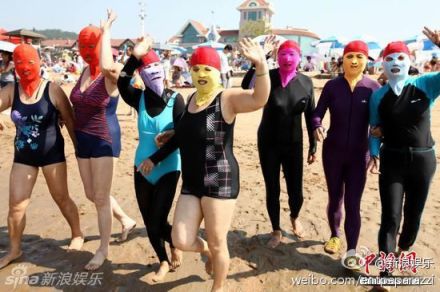
The facekini went viral in 2014.
In recent years, China has seen a rise in anti-tan, sun-protection garments. More than just preventing sunburn, these garments aim to prevent any tanning at all, helping Chinese women—and some men—maintain as pale a complexion as possible, as fair skin is deemed aesthetically ideal.
As temperatures are soaring across China, online fashion stores on Taobao and other platforms are offering all kinds of fashion solutions to prevent the skin, mainly the face, from being exposed to the sun.

One of these solutions is the reversed no-face sun protection hoodie, or the ‘peek-a-boo polo,’ a dress shirt with a reverse hoodie featuring eye holes and a zipper for the mouth area.

This sun-protective garment is available in various sizes and models, with some inspired by or made by the Japanese NOTHOMME brand. These garments can be worn in two ways—hoodie front or hoodie back. Prices range from 100 to 280 yuan ($13-$38) per shirt/jacket.

The no-face hoodie sun protection shirt is sold in various colors and variations on Chinese e-commerce sites.
Some shops on Taobao joke about the extreme sun-protective fashion, writing: “During the day, you don’t know which one is your wife. At night they’ll return to normal and you’ll see it’s your wife.”

On Xiaohongshu, fashion commenters note how Chinese sun protective clothing has become more extreme over the past few years, with “sunburn protection warriors” (防晒战士) thinking of all kinds of solutions to avoid a tan.

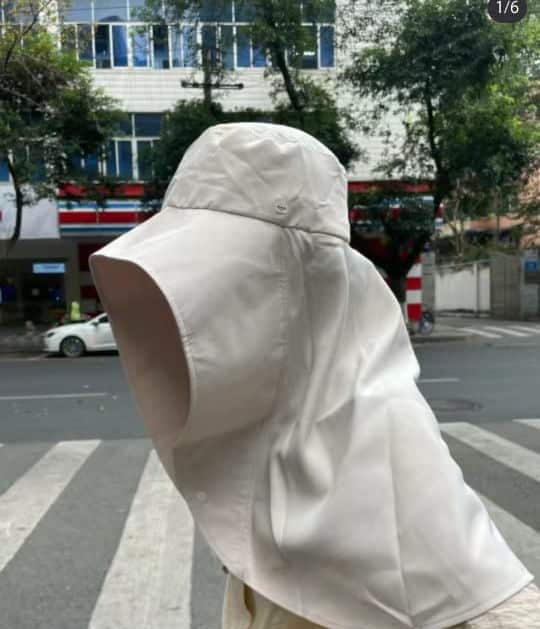


Although there are many jokes surrounding China’s “sun protection warriors,” some people believe they are taking it too far, even comparing them to Muslim women dressed in burqas.

Image shared on Weibo by @TA们叫我董小姐, comparing pretty girls before (left) and nowadays (right), also labeled “sunscreen terrorists.”
Some Xiaohongshu influencers argue that instead of wrapping themselves up like mummies, people should pay more attention to the UV index, suggesting that applying sunscreen and using a parasol or hat usually offers enough protection.
By Manya Koetse, with contributions by Miranda Barnes
Spotted a mistake or want to add something? Please let us know in comments below or email us. First-time commenters, please be patient – we will have to manually approve your comment before it appears.
©2024 Whatsonweibo. All rights reserved. Do not reproduce our content without permission – you can contact us at info@whatsonweibo.com.
Subscribe

Weibo Watch: The Future is Here

“Bye Bye Biden”: Biden’s Many Nicknames in Chinese

Enjoying the ‘Sea’ in Beijing’s Ditan Park

A Triumph for “Comrade Trump”: Chinese Social Media Reactions to Trump Rally Shooting

Weibo Watch: Get Up, Stand Up

The Tragic Story of “Fat Cat”: How a Chinese Gamer’s Suicide Went Viral

“Old Bull Eating Young Grass”: 86-Year-Old Chinese Painter Fan Zeng Marries 36-Year-Old Xu Meng

A Brew of Controversy: Lu Xun and LELECHA’s ‘Smoky’ Oolong Tea

Singing Competition or Patriotic Fight? Hunan TV’s ‘Singer 2024’ Stirs Nationalistic Sentiments

Zara Dress Goes Viral in China for Resemblance to Haidilao Apron

Weibo Watch: The Battle for the Bottom Bed

About the “AI Chatbot Based on Xi Jinping” Story

China’s Intensified Social Media Propaganda: “Taiwan Must Return to Motherland”

Weibo Watch: Telling China’s Stories Wrong

Saying Goodbye to “Uncle Wang”: Wang Wenbin Becomes Chinese Ambassador to Cambodia
Get in touch
Would you like to become a contributor, or do you have any tips or suggestions? Get in touch here!
Popular Reads
-

 China Insight3 months ago
China Insight3 months agoThe Tragic Story of “Fat Cat”: How a Chinese Gamer’s Suicide Went Viral
-

 China Music4 months ago
China Music4 months agoThe Chinese Viral TikTok Song Explained (No, It’s Not About Samsung)
-

 China Digital10 months ago
China Digital10 months agoToo Sexy for Weibo? Online Discussions on the Concept of ‘Cābiān’
-

 China Arts & Entertainment12 months ago
China Arts & Entertainment12 months agoBehind 8 Billion Streams: Who is Dao Lang Cursing in the Chinese Hit Song ‘Luocha Kingdom’?





